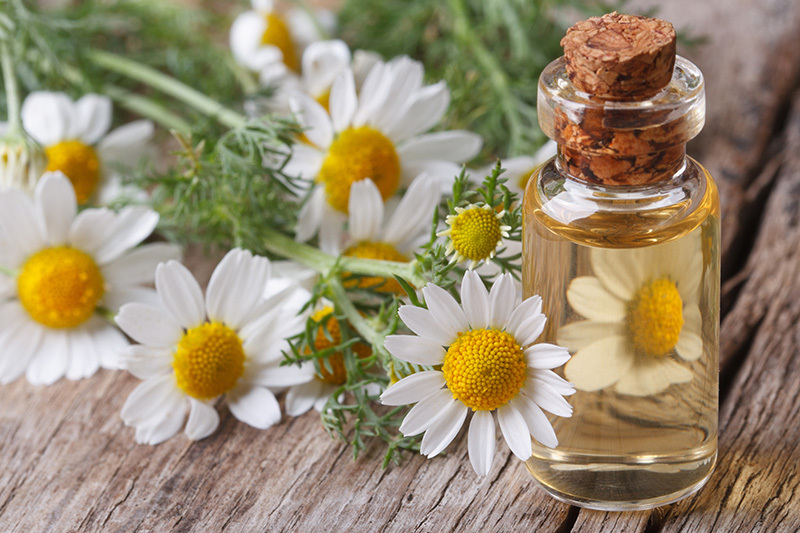Ensure Your Flowers Last Longer with These Tricks
Posted on 17/08/2025
Ensure Your Flowers Last Longer with These Tricks
Fresh flowers have the remarkable ability to brighten any room, lift moods, and offer a touch of nature's charm indoors. However, many people find their beautiful bouquets wilting and drooping sooner than expected. If you've ever wondered how to ensure your flowers last longer, you're not alone. Fortunately, with a few simple strategies and careful steps, you can extend your blossoms' life, ensuring you enjoy their beauty for days--if not weeks--on end.
Why Do Flowers Wilt So Quickly?
Understanding why flowers often don't last as long as we'd like is the first step toward keeping them vibrant. After being picked, blooms lose their main sources of nutrients and water, making them vulnerable to:
- Dehydration - Even a couple of hours out of water can start a wilting process.
- Bacterial growth - Stagnant water quickly breeds bacteria that block stems and impede water intake.
- Lack of nutrients - Flowers out of soil are deprived of the minerals and sugars they need.
- Environmental stress - Direct sunlight, drafts, and high temperatures can all shorten bloom time.
Luckily, these issues can be tackled with a blend of good care and flower preservation tricks. Read on for expert tips to maximize the lifespan of your floral arrangements.

Choose the Best Flowers for Longevity
Before even placing your bouquet in a vase, the type and freshness of the flowers you choose have a massive impact. Some flowers naturally have longer vase lives--knowing which varieties to pick is a great starting point.
Flowers That Last the Longest in a Vase
- Carnations - Up to 3 weeks with proper care.
- Alstroemeria - Stays fresh for 2 weeks.
- Chrysanthemums - Some types last up to 4 weeks.
- Lilies - Can look beautiful for 2 weeks.
- Orchids - 2-3 weeks if properly hydrated.
- Sunflowers and Zinnias - Known for persistent vibrancy.
Whenever possible, buy flowers fresh from a florist or farmer's market; stems should be perky, petals unblemished, and foliage lush. Ensuring flowers live longer starts with choosing the healthiest specimens.
Preparing Your Flowers for a Longer Life
A little preparation goes a long way toward extending the life of cut flowers. By following a few essential steps right after bringing them home, you'll notice a big difference in how long they last.
1. Trim the Stems Properly
Always cut your flower stems at an angle. Use a clean, sharp knife or scissors and remove about an inch from the bottom. This increases the water absorption area and stops the stems from resting flat at the bottom of the vase, helping to keep your cut flowers fresh.
2. Remove Lower Leaves
Any leaves that would sit below the waterline should be stripped off. Left underwater, these leaves rot, creating bacteria that quickly clog stems. This simple tip is crucial if you want to make fresh flowers last longer.
3. Use Clean Vases
Thoroughly wash your vases with soap and water before use. Bacterial buildup from previous bouquets is a major culprit in flower decay.
4. Choose the Right Water Temperature
Most flowers thrive in room temperature water; however, some (like spring bulbs) prefer slightly cooler water. When in doubt, tepid or cool water is usually safest.
The Role of Flower Food
Many bouquets come with packets of flower food. These aren't just marketing gimmicks--they contain a mix of sugar (for energy), acid (to stabilize pH), and bleach (to deter bacteria). For optimal flower longevity:
- Always follow the instructions on the food packet.
- If you run out, make a homemade solution: combine 1 teaspoon sugar, 1 teaspoon bleach (or white vinegar), and 2 teaspoons lemon or lime juice into a quart of water.
- Change the water and replenish food every 2-3 days.
Can You Make Your Own Flower Food?
Absolutely! The key is to provide both nourishment and antibacterial agents. Aside from the recipe above, some people add a drop of bleach and a splash of clear soda (which provides sugar and acidity).
Watering and Maintenance: The Keys to Longevity
Consistent care makes all the difference in making your flowers last as long as possible. Keep these tricks in mind:
- Check water levels daily - Stems soak up a surprising amount, especially early on.
- Change the water every 2-3 days - Don't just top it up; pour out old water and replace with fresh.
- Re-cut stems regularly - Every few days, shorten stems slightly at an angle to ensure continued water uptake.
- Keep vases clean - Wash and rinse thoroughly before refilling.
Signs Your Flowers Need Attention
- Cloudy vase water
- Drooping, wilting petals or stems
- Rotting smell or visible stem slime
Whenever you spot these warning signs, act quickly--replace the water, prune affected blooms, and clean the vase. With swift attention, you might revive the rest!
The Importance of Proper Placement
Where you display your flowers matters more than you might think. The environment can directly impact how long your vase flowers last.
Tips for Positioning Your Flowers
- Avoid direct sunlight - Natural light is great, but prolonged sun exposure accelerates wilting.
- Keep away from heat sources - Radiators, appliances, and electronics can dry out your flowers.
- Watch for drafts and vents - Sudden temperature changes can be damaging.
- Separate from ripening fruits - Fruits release ethylene gas, which speeds up floral decay.
Specific Flower Care: Special Tricks for Popular Varieties
1. Roses
- Remove guard petals (the outer, sometimes bruised petals) to let the inner bloom expand.
- Cut stems under water to prevent air from entering and blocking the xylem.
- Always use food, and change water frequently.
2. Lilies
- Remove anthers (the pollen-covered parts) as they open. This keeps arrangements clean and extends bloom life.
- Handle gently--bruised petals decay faster.
3. Hydrangeas
- Submerge entire heads in cool water for half an hour to revive drooping blooms.
- Crush the ends of the stems to improve water uptake.
4. Tulips
- Stand stems upright wrapped in paper in fresh water for a few hours to "condition" them after purchase.
- Keep them in a cool spot--tulips continue to grow and will droop quickly in warmth.
Surprising Tricks and Myths: What Works and What Doesn't?
Many time-honored tricks promise to preserve flowers but don't always deliver. Here's how some popular techniques stack up.
- Adding aspirin, vodka, or coins: Some swear by these additions for antibacterial effects, but science suggests flower food (even homemade) is more consistent.
- Sugar alone: Sugar provides energy but, without an antimicrobial agent, can accelerate decay.
- Refrigeration: Placing flowers in the fridge overnight can extend lifespan, as commercial florists do. Just keep them away from fresh fruit.
The Best Proven Flower Life Extension Hacks
- Hydration is vital: Flowers lose water quickly; always keep stems submerged.
- Regular maintenance: Changing the water and trimming stems is the most reliable way to prolong your bouquet's life.
- Homemade flower food: Don't rely on myths--use a blend of sugar, acid, and a touch of bleach or vinegar.
- Cool temperatures: Heat shortens bloom life, so display your bouquet in a cool area when possible.
How to Revive Wilting Flowers
Even the best care routine can't stave off wilting forever. However, some tricks can give droopy blooms a second chance:
- Give flowers a fresh cut - Always at an angle, and under water if possible, to open new channels for water uptake.
- Submerge entire stems in cool water for 30-60 minutes. This can reenergize droopy flowers.
- Change to new water and clean the vase to remove bacteria and toxins.
- Try floral sealant spray both on the stems and leaves for an extra burst of moisture retention.
If you notice softer green stems (such as tulips or poppies) drooping especially quickly, scorched ends can help. Briefly dip the freshly cut tip in boiling water for about 10 seconds, then immediately transfer back to cool water. This seals the end, stopping sap loss and sometimes restoring vitality to fading flowers.
Creative Arranging for Longer-Lasting Flowers
How you arrange your blooms can impact their longevity. Avoid overcrowding--packed flowers limit airflow and encourage mold growth. Instead:
- Use greenery and filler flowers to support and space out the larger blooms.
- Group flowers with similar care needs (e.g., keep thirsty flowers together, and sturdier varieties elsewhere).
- Display separate arrangements rather than one overstuffed bouquet for easier maintenance and eye-catching variety.
Seasonal Tips for Making Flowers Last Longer
Seasons influence both the type of flowers available and their care requirements.
- Spring and Summer: Use more frequent water changes to counteract faster bacterial growth.
- Fall and Winter: Room temperatures are lower, but avoid placing arrangements near radiators or heaters.
- Always mind the humidity: Dry air can quickly sap moisture, so consider misting delicate blooms if needed.
Eco-Friendly Ways to Extend the Life of Flowers
Looking for environmentally conscious ways to keep flowers fresh longer? Try these approaches:
- Repurpose faded stems - Turn older flowers into pressed art, potpourri, or compost.
- Skip chemical additives by using natural flower food and regularly cleaning with vinegar instead of harsh cleaners.
- Buy local and in season for the freshest, most sustainable blossoms.

When to Let Go: Composting and Disposal
Even with all these tips, all flowers inevitably fade. Make sure you dispose of them in an eco-friendly way:
- Compost spent stems and petals to nourish your garden or potted plants.
- Reuse vases and greenery for future arrangements or craft projects.
- Dry special blooms for keepsakes or pressing.
Final Thoughts: Enjoy Your Flowers Longer with These Easy Tricks
With a thoughtful approach, ensuring your flowers last longer is simple, economical, and environmentally conscious. Start with the freshest possible blooms, care for them daily, and employ clever hacks to suit your bouquet's specific needs. By integrating these techniques into your flower care routine, you can keep your home vibrant and inviting with little fuss and maximum enjoyment.
Whether you use these tricks to prolong the life of your cut flowers for a celebration or just to lift your spirits, the results speak for themselves--a longer-lasting reminder of nature's elegance, right in your living space.
Summary: Top Tips for Flower Longevity
- Pick fresh, resilient flowers from local sources.
- Trim stems, remove underwater foliage, and use a clean vase.
- Feed your flowers with flower food or a homemade substitute.
- Change water, re-cut stems, and clean containers regularly.
- Display flowers away from sunlight, heat, and fruit bowls.
- Revive tired blooms with deep-water soaks and fresh cuts.
- Compost responsibly when your flowers' time is up.
For more inspiration and practical floral advice, visit our blog regularly and discover new ways to make your flowers last!







